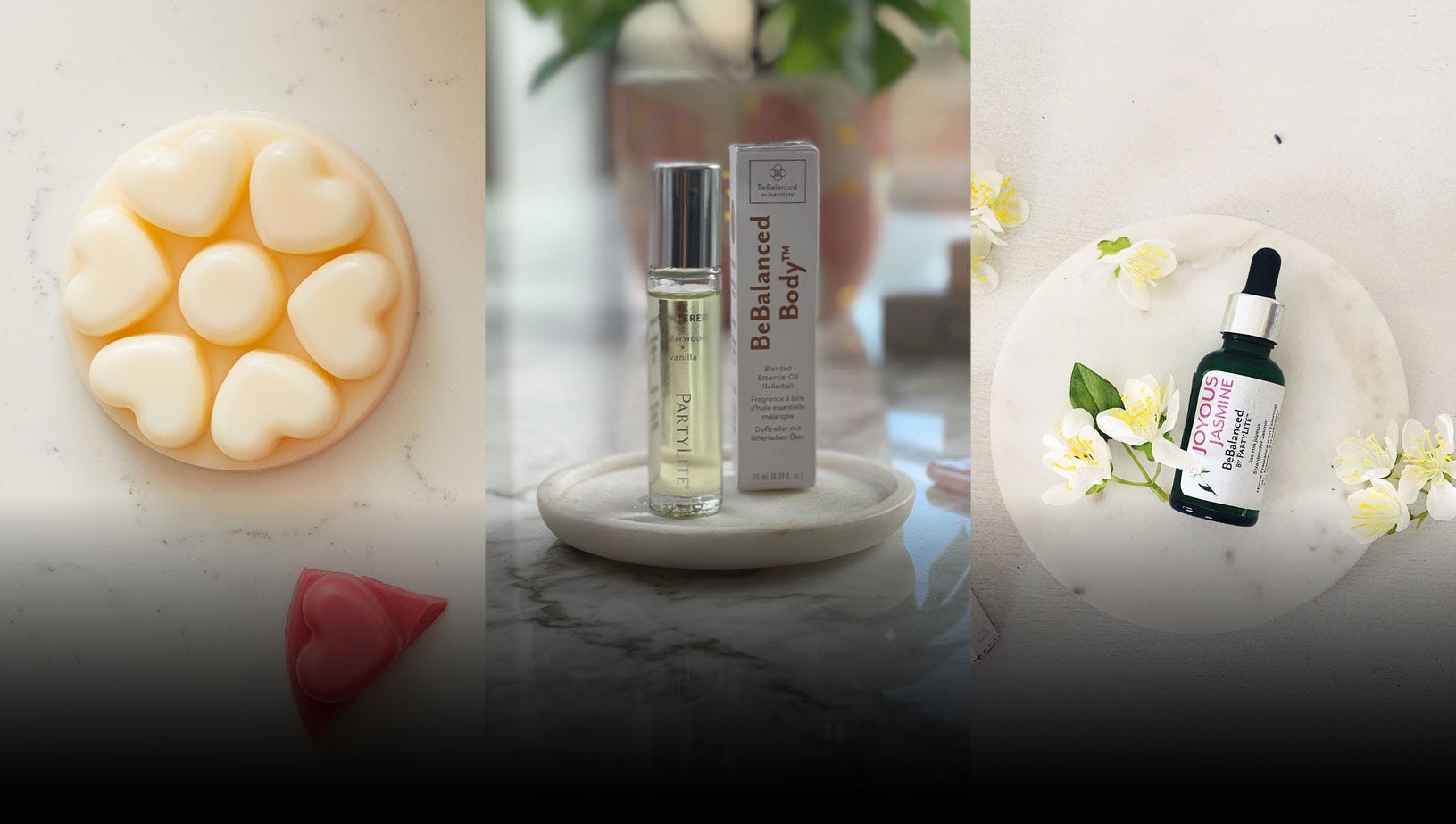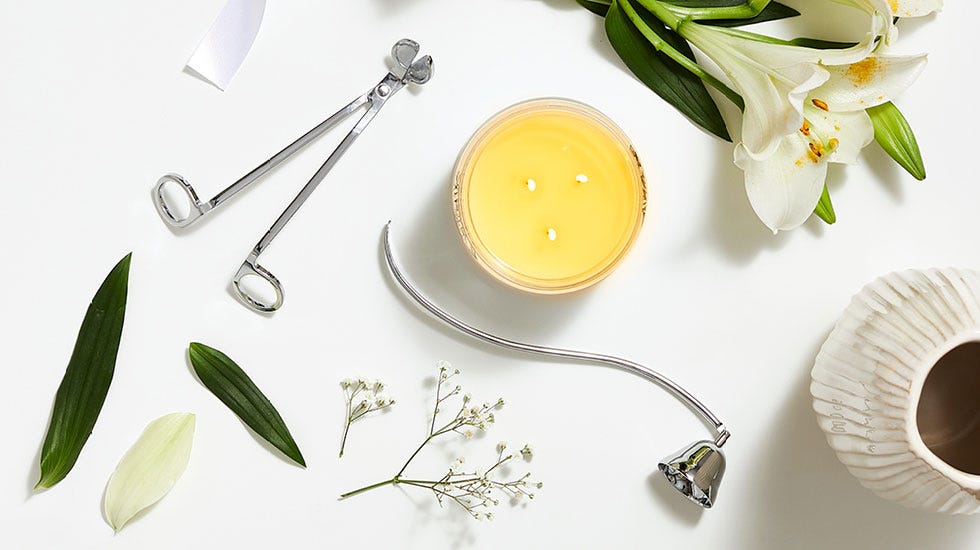We all care about the safety of the products we use every day in our homes. Whether it’s cleaning products, paints or bedding, many of us spend extra time and money to ensure we’re choosing the safest and most sustainable options we can. Fragrance should be no different.
We know that safely scenting your home should be stress-free, which is why we’ve put together this handy guide on what to avoid. So you can trust that you’re surrounding your family and pets with the best non-toxic candles and room fragrances possible.
The ingredients to avoid


You may have heard of many ingredients to avoid, but not why. Here are some of the most common elements of fragrance you should always avoid, and what harms they cause. This goes beyond simple allergies, to ingredients that are harmful to all of us. You can see why we recommend they’re never part of any scents you bring home to you and your family.
Parabens
Used as a preservative in many cosmetics and fragrance products, parabens are a family of chemicals designed to prevent growth of moulds and bacteria. However, there are many studies that show a harmful link between parabens and cancers. There is growing research that links the chemicals with abnormal cell growth, as parabens mimic oestrogen and can cause harmful effects particularly in breast cells.
Phthalates
A group of chemicals that’s used to make plastics more durable, or to dissolve other ingredients in cosmetic formulas. Phthalates are often found in soaps, shampoos and hairsprays, alongside vinyl flooring and industrial oils. Despite their common presence in hundreds of products, research has shown links between phthalates and damage to major organs including the liver, kidneys, lungs, and reproductive system.
Coal Tar Dyes
Present in a huge range of cosmetics and homeware products, coal tar dyes are a category of coloured dyes made from entirely artificial ingredients. They’re harmful due to their inclusion of heavy metals, which are known to cause brain damage when ingested (either through the nose or mouth). Studies have shown that cutting the consumption of coal tar dyes can even lessen the symptoms of ADHD.
Lead
The use of lead in many materials has been outlawed due to its well-documented harm to the body, but it still appears in many less well-regulated products you may find when shopping online. Lead has been proven to cause anaemia, liver damage and serious brain damage, especially through long term exposure.
Mercury
Once used in a range of lighting equipment for the home, mercury has been banned for use in many industries. It’s very unsafe for use in home fragrances, as inhaling mercury vapour is known to have harmful effects on the nervous, digestive and immune systems, lungs and kidneys. Unregulated manufacturers are sometimes unaware of the harms, so you should always check it isn’t being used.
Mineral Oil
Used in a range of cosmetic and fragrance applications, mineral oils must be carefully treated to be safe for use on the skin or in the home. When highly refined their negative effects are minimal, however when unrefined their petroleum components can increase the risk of cancer. We recommend avoiding mineral oil ingredients entirely, so you can be sure there’s no risk of unrefined oils in your products. In all forms, mineral oils can be harmful to the environment too, interrupting natural soil drainage and causing flood risk.
Hydroquinone
Used in many topical creams and fragrance additives, hydroquinone is not as harmful as many other ingredients on the list. However, it can be an irritant, especially for those with sensitive skin. It’s been known to cause blistering, itching, scaling and bruising.
Acetone
You may regularly use acetone for simple cosmetic uses like nail polish removal. It has plenty of practical uses, but can be very harmful when regularly inhaled. That’s why it should always be avoided in fragrances. Inhalation of the chemical can cause headaches, tiredness, slurred speech, and even vomiting.
Formaldehyde (and formaldehyde-releasing preservatives)
Formaldehyde is well known as a highly toxic chemical that can be fatal when inhaled, inducing dizziness and suffocation. It’s not commonly used, of course, but many preservatives used in common home items can release the toxin during their processes. These can induce the same effects, even in small doses.
Petrolatum
Used in some forms of petroleum jelly, petrolatum is an oil-derived product. It’s been theorised that it can cause cancer, and is harmful to the eyes, and is banned for use in many products by the European Union.
Sodium Lauryl Ether
Commonly found in many cleansing cosmetics, SLES can cause severe skin irritation and corrosion. Contact with the skin can be known to cause burns and blisters, and severe pain.
Sodium Laureth Sulfate
A related compound to SLES, Sodium Laureth Sulfate is a lathering ingredient in many shampoos, and is often included in fragrance formulations. It can also cause burns, blisters and skin irritation.
Toluene
Found in many lacquers, paints and manufacturing processes, Toluene is particularly harmful when inhaled. It can cause a series of issues including eye and nose irritation, tiredness, dizziness, headache, anxiety, nerve damage and liver and kidney damage.
Talc
Talc was once a popular product used by families on a daily basis, but research has shown it has particularly harmful effects through inhalation. Talc dust can cause breathing problems and chest pains, and in rare cases can be poisonous.
We are committed to creating non-toxic candles and home fragrance products that never use the harmful ingredients above. We’ve got over 40 ingredients we refuse to use, as part of our BePURE Commitment.
How to choose safer fragrance ingredients


So now you know what to avoid, what are the positive elements you should seek out? Whether you’re seeking family-safe fragrance or dog friendly essential oils, the key is to seek out the most transparent ingredient lists that showcase natural processes.
Essential oils are the purest, natural forms of scent ingredients, derived simply from natural sources. They are extracted from nature using processes like steaming, resin tapping and cold pressing. This ensures there is no chemical interference, so the natural scent is preserved.
Quality fragrance houses, whether they’re creating perfumes for you or your home, will always use only the purest oils. Avoid synthetic fragrance imitations by seeking out fragrance creators that explicitly mention pure essential oils.
In addition to the fragrances themselves, it’s important to be mindful of the materials used to carry them. The purest quality wax will always mention what makes it clean burning, you should seek out sustainably sourced paper products, and quality carrier oils are important to ensure no harm is caused to you, or the planet.
Safely using scents at home and life


Now you’ve chosen the right fragrance ingredients, with the safest formulations, it’s important to use them responsibly too. You should make sure that you're burning candles in the best way to minimise smoke and fill your home with non-toxic room fragrance. That means trimming your wicks every time, storing your scented candles with lids to make sure you are not burning dust, and using a snuffer to extinguish flames after use so wicks stay intact for the next burn.
It's important to always utilise open flames safely, so if you can't keep candles attended at all times, or you have small children or pets that may bump a candle and spill it, you should consider a flameless fragrance method. Essential oil diffusers that are in a stable place are ideal, as they use only water vapour mixed with natural essential oils in their purest form. It doesn’t come much cleaner than that.
For fragrance that never needs to be turned on or off, you can use reed diffusers or paper products that provide round-the-clock scents at home. These should only use essential oils as the scent carrier, with no unnecessary additives. These scents are also subtle enough to be used all day long without overwhelming your space.
For smaller rooms, don't forget the importance of proper ventilation. Layering scents can provide beautiful combinations, but can be stifling, so you should try to balance a fresh air source alongside airborne fragrance. It’s also important to ensure that rooms with bad ventilation use the right fragrance products, so you’re achieving the desired scent result without needing to light flames for a long time. For example, odour-neutralising scents are perfect to keep things fresh without the scent becoming stifling, and act quickly so you don’t need to burn them for a long time.
Last but not least, when using scents on the skin, it's important to stay informed. Pure essential oils are often much too abrasive for direct use on the skin, so you should ensure that they're suspended in carrier oils that explicitly mention skin safety. Stronger, purer oils are safe for use in the air, via a diffuser of your choice.
Want to know more about how we keep our products safe for everyone? Read more about the No-No List of ingredients we never use, plus information on our sustainability commitment.

















